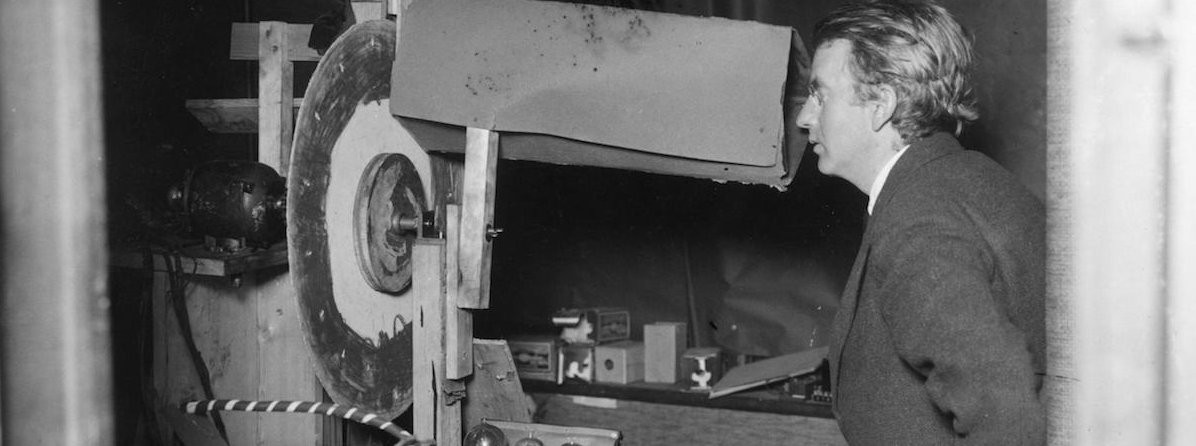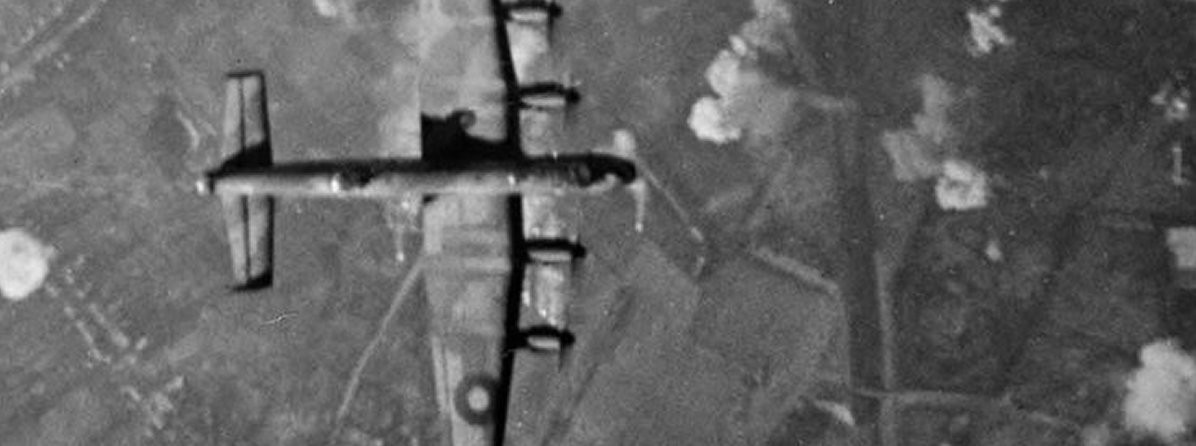
John Logie Baird - Television, Secret Experiments, Sabotage, Lies
John Logie Baird's invention of television and the work he did during the war was surrounded by secret experiments, sabotage and lies

Research for this biography includes excerpts from Television To-Day & To-Morrow by Sydney A. Moseley and H. J. Barton Chapple as well as from the first full biography of Baird, Baird of Television written by Ronald F. Tiltman, which was written with the cooperation of John Logie Baird himself (as well as some Baird family members). Both books featured contributions from many of the people who witnessed Baird's experiments less than a decade before both books' publication dates of 1930 and 1933, respectively. Both are no doubt the basis for many reference works on the life of Baird and his work in the development of television. Another interesting source is a 1986 publication entitled The Secret Life of John Logie Baird by Tom McArthur and Peter Waddell. And I am indebted to Jeffrey Cohen for sharing interviews that he conducted and articles that he wrote himself, which detailed information that had not been available before, and which confirmed previous rumours of Baird's secret experiments. A detailed account of Baird's better known experiments into television and beyond are covered in Tiltman's publication and the book set out to dispel many of the previously held myths surrounding Baird's work as well as disputing previously established facts about when, where and how Baird first realised his dream of creating true television. Finally, some passages from Baird Television by Margaret Baird (JLB's wife) were also utilised. Other information has been gleamed from various Internet sources.
It is true that Baird didn't do himself any favours when it came to cementing his reputation and evidencing his own contributions. Much of his work appears to have been kept secret and dates were changed in order to hide the projects he was actually working on which has left inconsistencies in important dates and confusion with regards to certain discoveries. This article cross references what is known and what is claimed, in the hope to give more clarity.
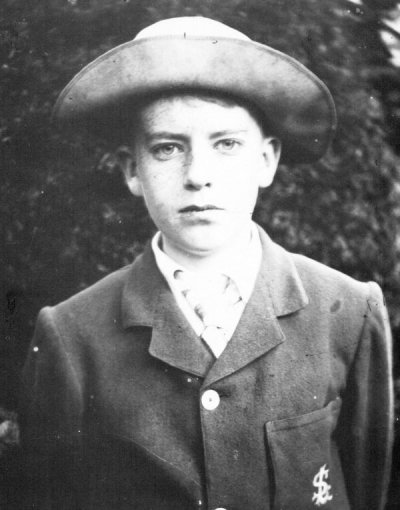
In the preface to his 1933 publication, Ronald F. Tiltman wrote, 'Baird was the first man in the world to achieve television, the first man to commercialise television. He placed British television in the van of world progress and, in my opinion, has maintained its pre-eminent position up till now. Who will deny this pioneer the status which is his by right of his accomplishments?'
John Logie Baird was born on 13th August 1888 in Helensburgh, Dumbartonshire, Scotland. From his early childhood Baird suffered from ill health and at one time he was not expected to live beyond his young years. He defied the odds and had an extremely active childhood although he was by no means a brilliant scholar, his health being a constant handicap to his education. In spite of a delicate constitution, he quickly established himself as the leader of the youth of the village. Baird's home soon became a hive of engineering activity, and the young Baird's first experimental work was with an experimental telephone system. To amuse his friends, he rigged up a circuit consisting of the conventional two biscuit tins connected with string. It was not long before Baird was looking for ways to improve on this crude method of communication and he soon set about devising a circuit made from nails bound round with wire, two tins and an electric battery. This would later be developed further into an elaborate telephone exchange in his bedroom with wires slung precariously across several streets of his neighbourhood, connecting four of his friends.
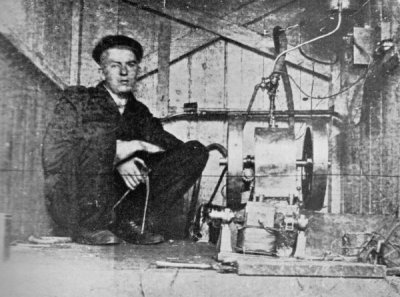
Baird's next venture was a single-handed installation of an electric light plant at home. The current was generated by a homemade dynamo, driven by a water wheel worked from the water main. Another of young Baird's keen interests was in photography, and a club was formed with Baird as president. Even with the photographic club Baird displayed his inventive spirit by immersing himself further into the subject matter. He enlarged photographs first by means of a magic lantern. He also experimented with delayed exposure photography and with the aid of a flashlight he managed to photograph himself in bed asleep.
At the age of seventeen Baird entered the Royal Technical College, Glasgow, to follow a course for electrical engineering and passed the course with distinction and then went to Glasgow University where he studied Electrical Engineering and Pure Physics. He studied for the B.Sc. degree and would most certainly have passed, having gone through the entire curriculum. However, a few months before he was due to take his final exams World War 1 broke out, and although he intended to return to finish his studies he never did.
During the time between attending college and university, Baird carried out a good deal of experimental work in connection with electricity and the construction of selenium cells. But it was not carried out in the either institution's respective laboratories, as the regular curriculum precluded him from undertaking original experiments. Instead, Baird experimented in his kitchen at home, where he spent many hours trying to construct a selenium photoelectric cell that many scientists believed would ultimately lead to the invention of television. But like all before him Baird proved to be unsuccessful, and he burnt his hands in the process.
For many biographers this was the point in Baird's life that he gave up his television experimenting for a number of years, turning instead to numerous business ventures, all of which would end in eventual failure. A combination of these failures and poor health would eventually drive Baird back to television experimenting, where, in a Hastings attic in 1922, following a few short months of experimentation; he would finally achieve his goal. An article in the Daily Express published on 26th January 1926 states: "He began his experiments in 1912. He met with great difficulties -lack of capital, shortness of time caused by the need to earn a living, and the knowledge that all over the globe, some of the best brains of the scientific world, backed by the possession of splendidly-equipped laboratories and limitless capital, were trying to complete the discovery in front of him. He saved his earnings, however, and worked far into the night, sometimes having to stop his experiments because of the strain." It may be implied from this that although Baird gave up his experimenting from time to time, his research continued from those early days in Scotland.
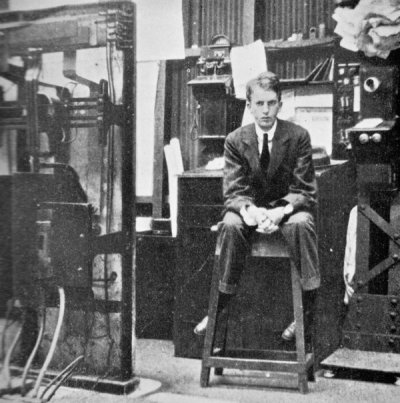
With the outbreak of war, Baird offered himself for enlistment, but was rejected on the grounds of physical unfitness. Instead, he took the position as Assistant Mains Engineer with the Clyde Valley Electrical Power Company, and although he held this position until the cessation of hostilities, by the end of the war his health had deteriorated. At that point Baird determined to give up engineering altogether. With the money he had saved during the war he patented a medicated and self-absorbent sock that he had invented. The Baird Undersock proved successful enough for Baird to go on and develop a special shoe cleaner called The Osmo Boot Polish, and within a year, selling his products directly to local retail chemists, the young Scotsman had built himself a fairly respectful and profitable business.
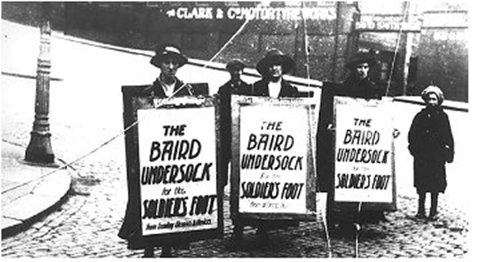
Just at this time Baird's health took another turn for the worse, and under the strain and worry of commercial life, he sold his business and liquidated his assets. Deciding that what he needed was to live in a warmer climate, Baird set sail for the West Indies, and secured a number of agencies to supply cotton goods and fancy articles to the inhabitants of his chosen place of residence, the Island of Trinidad. But shortly after arriving in Port of Spain, the capital of the island, Baird realised that he was not the first to embark on such a venture and began looking around for another form of income. It soon struck him that there was room for the development of a jam and preserves industry. Much of the fruit that grew in such profusion on the island was left on the ground to rot. Trinidad was also one of the principal sugar growing centres of the West Indies, so the ingredients for jam making were available locally and in abundance. It was anything but a thriving business, "I had calculated without the insects. The factory became an insect paradise" he would later recall. "Weird insects whose names I did not know flew in and out in swarms. Mosquitoes continually enfolded me in a cloud." And within that year he became desperately ill again, this time suffering from Malaria. Deciding to return to England, Baird sold the factory for a paltry £5.00.
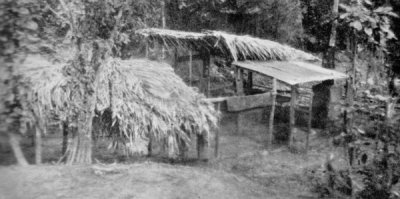
By 1920 John Logie Baird found himself back in London, in poor health and with no income except for some limited funds saved from his West Indian activities. Briefly he toyed with the idea of returning to scientific research but ultimately returned to the world of business. Baird began dealing in Australian honey, which he purchased at a low price before packing it into small tins and selling it for a large profit. This business enterprise got Baird back on his financial feet once more and led to other ventures including the manufacture of a soap called Baird's Speedy Cleaner. Unfortunately, it was at this time that Baird suffered a complete physical and nervous breakdown and was ordered by his doctor to abandon forever all thoughts of a business career in London. He was ordered to take a prolonged and complete rest on the English south coast and having chosen Hastings as a suitable resort, he repaired there in the latter part of 1922 little better than a physical wreck. According to Ronald Tiltman's biography of Baird, he had no income whatsoever and only a small amount of capital saved from his soap business venture. However, there is evidence to suggest that en route to Hastings, Baird may have rented accommodation in Folkstone at 26 Guildhall Street, although there is no mention of this in his earliest biography.
For the first few months in Hastings the 34-year-old Scotsman was in no physical or mental condition to do anything other than convalesce. But with gradual returning health came the desire for activity. With the physical demands of business being out of the question, Baird's thoughts now turned to his first love -scientific research. Looking for new avenues to explore, Baird apparently remembered the early experiment that he'd carried out with selenium cells in his kitchen experiments. After a lapse of more than ten years, did Baird decide to turn his attention once more to the scientific dream that was the invention of television? Evidence exists that Baird never really gave up his dream of inventing television and every move that he made, every business that he ventured into, was for the sole purpose of financing his experiments.
In Both Side of the Burn published in 1966, the author, W. Imrie, a history master at a secondary school, stated that at the time that Baird was in the Undersock business he was in lodgings at a terraced house, Kildonan, 17 Coldingham Avenue, Yoker. In this house he is said to have achieved the first practicable method of transmitting live pictures. According to Imrie, Baird's equipment consisted of a tea chest, biscuit tin, scraps of cardboard, fourpenny lenses purchased from a cycle shop, some darning needles, string, sealing wax, wire, glue, and a second-hand electric motor. Although the picture obtained was indistinct, its transmission from one room to another was, in the authors words, "unquestionable."
Certainly the equipment described in this book is identical to that used by Baird eight years later in Hastings, although it is entirely possible that the author was able to write this story years later with hindsight. However, other reports from different sources may confirm Imrie's account to be accurate. Colin Graham worked as one of Baird's salesmen and said that Baird rented an attic in Bath Hotel, Bath Street, between 1918 - 1919, where Graham helped him punch holes in cardboard discs, which he now recognises as Nipkow discs for TV scanning. The widow of Alex Horn, a civil engineer friend of Baird's recalled that her husband spent a great deal of his spare time manufacturing 'secret' components for Baird which appeared to be about half an inch by five-eighths of an inch of either nickel or chrome. These were made between 1920 and 1922 after Baird had returned from Trinidad. These objects were rectangular in shape and no bigger than a postage stamp and she never discovered their purpose. Years later, she described these components to an engineering lecturer at Melbourne University, who told her that they sounded remarkably like radar components.
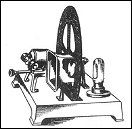
The equipment that Baird appears to be using may have been influenced by Paul Nipkow and French engineer, industrialist, and politician Lazare Weiller. Paul Nipkow conceived an "electric telescope", for the idea of using a spiral-perforated disk (Nipkow disk), to divide a picture into a linear sequence of points. He applied to the imperial patent office in Berlin for a patent covering an "electric telescope" for the "electric reproduction of illuminating objects", in the category "electric apparatuses". This was granted on 15th January 1885, retroactive to 6th January 1884. However, Nipkow didn't go beyond patent to experiment, and the patent lapsed after 15 years. In October 1889, Weiller published a major article Sur la vision à distance par l'électricité (On vision at a distance by electricity) where he proposed a way to scan, transmit and project images. Weiller said he was inspired by the experiments by Jules Antoine Lissajous, who had used light reflected from small mirrors to investigate vibratory motion. His proposal was to use a rotating drum to which a number of tangential mirrors were attached, oriented so the image was scanned into a series of lines projected onto a selenium cell. The resulting electrical signal was transmitted over a wire, converted by a "telephone à gaz" back to light that was shone onto an identical mirror drum synchronized with the first drum, which would project the image onto a screen. The French researcher Marcel Brillouin wrote in the Revue générale des sciences pures et appliquées (Paris, 30th January 1891) that "M Weiller's 360-mirror cylinder ... is almost impossible to construct if you want fidelity."
In the course of researching their book, The Secret Life of John Logie Baird, Tom McArthur and Peter Waddell suggest that Baird did not simply go to the West Indies for convalescence, but to continue his experiments in secret. Although there was never any suggestion from previous accounts of Baird's life that he attempted any research whilst in Trinidad, the authors contacted several people who told an altogether different story. If their research is correct, it would seem as though Baird vigorously pursued the work he had begun at home some years before. In his room in the wooden house of a local plantation owner Baird soon earned himself a local reputation and a nickname of 'Obeah' or 'Black Magic Man', because of the strange flashing lights coming from the house at night. This would suggest that Baird, influenced by both Nipkow and Weiller, was conducting experiments along the lines of their theories. Furthermore, one local stated that from his own personal knowledge, Baird was transmitting pictures over a distance of "a few hundred feet."
Whether any of this is true or not, one thing can be confirmed from Baird himself who stated in a 1936 newspaper article, whilst lamenting on his failed preserves industry; "...the only progress I made in that West Indies year was towards television. I spent my nights in the jungle working out problems, and on my return to England I was ready for new experiments." If accepted, this in itself would disprove the story that Baird only resumed his television experimenting in Hastings. One of the reasons why many people have dismissed Baird's work in the past is their difficulty in accepting that he was able to develop true television within a few months of moving into his Hastings address. Would the story now be more acceptable if it was proved that the startling results he achieved were the product of more than a decade of constant experimentation?
